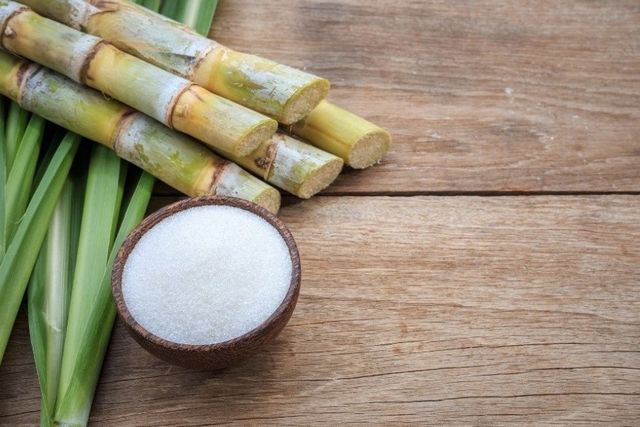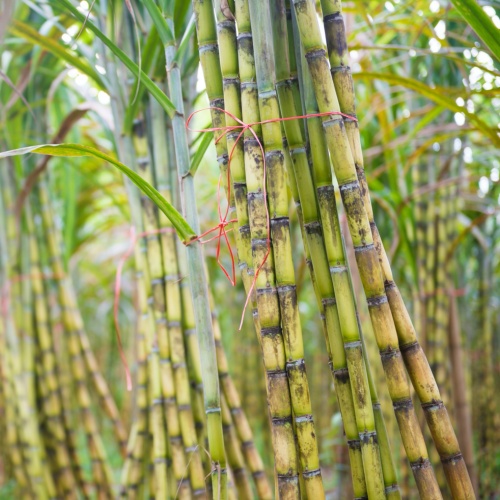The Journey of Cane Sugar Processing: From Harvest to Crystals
The Journey of Cane Sugar Processing: From Harvest to Crystals
Blog Article
Exploring the Comprehensive Tips Associated With Walking Stick Sugar Processing From Gathering to Refinement
The procedure of walking cane sugar manufacturing encompasses a collection of complex steps, beginning with the mindful harvesting of sugarcane and culminating in the improvement stages that ensure the end product meets sector requirements. Each stage, from the extraction of juice to the filtration and condensation procedures, plays an important duty in determining the top quality and personality of the sugar. Comprehending these phases not just highlights the intricacy of sugar manufacturing but also increases critical inquiries regarding efficiency, sustainability, and development in the sector. What implications do these aspects have for future techniques?
Gathering Sugarcane
Collecting sugarcane is an essential step in the cane sugar processing chain, as it directly influences the high quality and yield of the end product. Correct timing and techniques are important during this phase to ensure optimum sugar web content and reduce losses. Usually, sugarcane is collected when it gets to maturity, normally 12 to 18 months after growing, defined by a high sucrose concentration.
:max_bytes(150000):strip_icc()/canesugarBURCUATALAYTANKUT-42971cd7f8b84b4fb756984c18728339.jpg)
Post-harvest, the sugarcane has to be refined promptly to stop sucrose destruction. Preferably, gathered walking stick ought to be delivered to refining centers within 24 hr to maintain sugar quality. Consequently, effective logistical planning is important to keep the honesty of the gathered plant throughout the supply chain.
Extraction Process

The crushed walking stick goes through a series of pressing operations to maximize juice recuperation. Generally, warm water is splashed onto the crushed walking cane, creating a countercurrent circulation that aids dissolve the sugar while additionally aiding in the removal procedure. The juice gathered from this operation has not just sugar yet additionally different organic substances and contaminations.

To enhance removal efficiency, some centers might employ diffusion techniques, where the sugarcane is saturated in warm water, permitting the soluble sugars to diffuse right into the fluid. The resulting juice, abundant in sucrose, is then directed to succeeding processing stages, laying the foundation for purification and refinement. The extraction process is thus essential in determining the quality and yield of the final sugar product.
Filtration Methods
The purification methods utilized in cane sugar processing are essential for transforming the raw juice into a high-grade sugar item. These approaches largely intend to eliminate impurities, such as dirt, plant materials, and not natural substances, which can negatively impact the final product's taste and shade.
Among one of the most usual filtration methods is information. This procedure entails including lime and warm to the raw juice, which promotes the coagulation of pollutants. The resulting precipitate is after that eliminated via sedimentation or filtering, producing a clearer juice. In addition, using phosphoric acid can enhance the explanation procedure by more binding pollutants.
An additional considerable technique is carbonatation, where co2 is introduced to the cleared up juice. This response creates this hyperlink calcium carbonate, which captures staying impurities and advertises their removal.
Additionally, triggered carbon therapy may be put on adsorb any kind of continuing to be colorants and organic impurities, ensuring a much more polished product. The combination of these techniques efficiently prepares the sugar juice for succeeding action in the refining procedure, establishing the phase for the production of top notch cane sugar.
Condensation Approaches
After the purification phase, the next important step in walking stick sugar handling involves condensation techniques, which play a critical function in changing the clarified juice into strong sugar. This procedure normally employs 2 key techniques: spontaneous formation and regulated formation.
In spontaneous crystallization, supersaturated sugar options are allowed to cool naturally, leading to the formation of sugar crystals gradually. This approach is simpler but may lead to unequal crystal dimensions and reduced pureness degrees. On the various other hand, controlled crystallization is a more precise method where seeding, concentration, and temperature level representatives are meticulously managed. This method enables the uniform growth of sugar crystals and greater pureness.
Throughout condensation, the made clear juice is focused with evaporation, enhancing its sugar material until it reaches supersaturation. As soon as this factor is accomplished, either technique can help with the crystallization process. Cane Sugar Processing. The resultant sugar crystals are then divided from the staying syrup with centrifugation
Ultimately, the option of condensation approach affects the high quality, size, and pureness of the last sugar item, making this step crucial Discover More in the total walking stick sugar processing treatment.
Refinement and Packaging
Just how can the purity and high quality of cane sugar be better improved after condensation? The refinement procedure plays a vital role in accomplishing premium walking cane sugar.
Next, the sugar goes through a procedure called centrifugation, where it is spun at high rates to divide the purified sugar crystals from the staying fluid. After centrifugation, the sugar is typically more refined with an approach called carbonization or phosphatation, which makes use of turned on carbon or phosphoric acid to remove shade and off-flavors.
When fine-tuned, the sugar is dried to accomplish the desired dampness content, making sure that it remains stable during storage space and transport. The last action involves packaging the refined sugar in moisture-proof and impermeable containers to maintain its quality and prevent contamination. Cane Sugar Processing. Proper product packaging Continued not just expands rack life but also assists in very easy handling and circulation, ensuring that consumers receive sugar that meets the highest standards of purity and high quality
Final Thought
The extensive actions associated with walking cane sugar handling, from the careful harvesting of sugarcane to the elaborate refinement and product packaging phases, highlight the value of each phase in making sure high-quality sugar production. Ideal harvesting techniques, effective removal techniques, and rigorous purification procedures jointly add to the last product's purity and stability. The formation and subsequent product packaging practices further improve the integrity and service life of the sugar, highlighting the intricacy and accuracy fundamental in this important agricultural industry.
The process of walking cane sugar manufacturing encompasses a collection of detailed actions, beginning with the careful harvesting of sugarcane and culminating in the improvement stages that make sure the final item meets market requirements. Preferably, harvested walking stick needs to be delivered to processing centers within 24 hours to protect sugar quality.In spontaneous crystallization, supersaturated sugar remedies are permitted to cool down naturally, leading to the formation of sugar crystals over time - Cane Sugar Processing. The improvement process plays a critical duty in accomplishing high-grade walking stick sugar.The thorough steps entailed in cane sugar handling, from the meticulous harvesting of sugarcane to the elaborate refinement and product packaging stages, emphasize the relevance of each stage in making sure top notch sugar manufacturing
Report this page